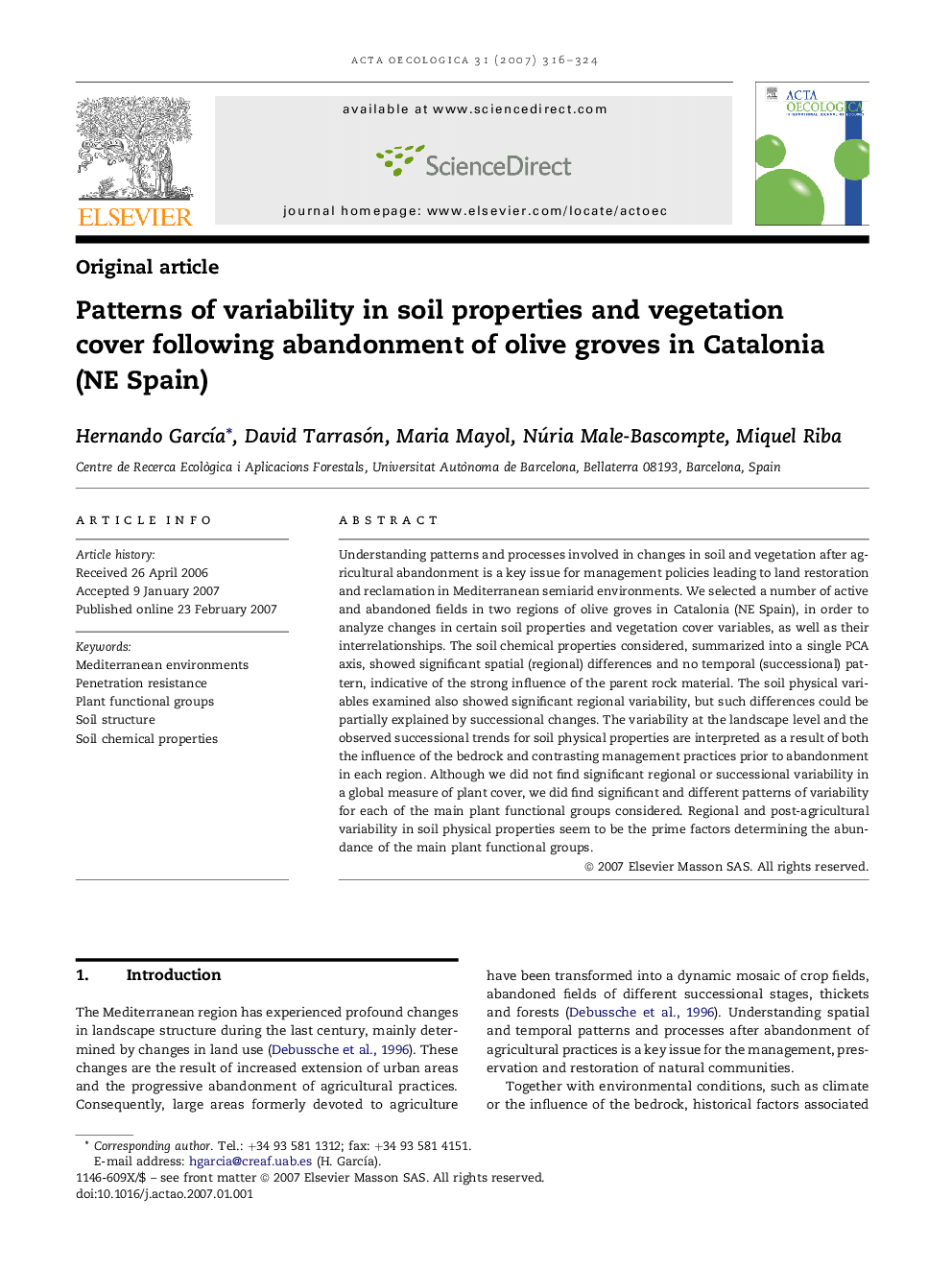| Article ID | Journal | Published Year | Pages | File Type |
|---|---|---|---|---|
| 4381659 | Acta Oecologica | 2007 | 9 Pages |
Understanding patterns and processes involved in changes in soil and vegetation after agricultural abandonment is a key issue for management policies leading to land restoration and reclamation in Mediterranean semiarid environments. We selected a number of active and abandoned fields in two regions of olive groves in Catalonia (NE Spain), in order to analyze changes in certain soil properties and vegetation cover variables, as well as their interrelationships. The soil chemical properties considered, summarized into a single PCA axis, showed significant spatial (regional) differences and no temporal (successional) pattern, indicative of the strong influence of the parent rock material. The soil physical variables examined also showed significant regional variability, but such differences could be partially explained by successional changes. The variability at the landscape level and the observed successional trends for soil physical properties are interpreted as a result of both the influence of the bedrock and contrasting management practices prior to abandonment in each region. Although we did not find significant regional or successional variability in a global measure of plant cover, we did find significant and different patterns of variability for each of the main plant functional groups considered. Regional and post-agricultural variability in soil physical properties seem to be the prime factors determining the abundance of the main plant functional groups.
